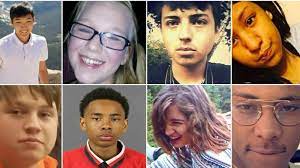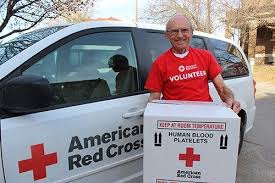A truck full of teenagers came into a high school parking lot where students were congregated at lunchtime on a balmy day in the huge Denver suburb of Aurora, and gunfire went out.
Three people were injured, and others fled in terror.
According to court filings, one of the youths involved in the Nov. 19 shooting later admitted to detectives that he took his armed pals to an expected gang fight because “that’s the way it is in this community.”
The shooting was one of several involving teens in the course of two weeks, bringing renewed attention to a long-standing problem of gun violence and gangs in the state’s third-largest city, where the police force has been criticized for its treatment of Black citizens. According to activists and government authorities, easy access to guns is contributing to the problem, which has been compounded by the pandemic and its effects, particularly on children.
Shootings involving children and teenagers have increased across the United States in recent years, including in 2021. According to a report released in March by the Children’s Defense Fund, child and teen shooting deaths reached a 19-year high in 2017 and have continued to rise. Black children and teenagers were four times more likely than white children and teenagers to be shot and killed.
As Denver has become more expensive in recent years, Aurora has seen a rise in Black and Latino families as well as immigrants from all over the world. The COVID-19 pandemic has struck families of color harder in terms of health and economics, contributing to mental health issues, according to Maisha Fields, an activist who works with adolescents and families in the metropolis of 379,000 people.
After a truckload of boys arrived at Hinkley High School on Nov. 19, an argument broke out in the parking lot. According to authorities, the pickup sped away after the initial shots were fired, with at least two adolescents pointing guns out the windows, sending students fleeing in terror.
Three 16-year-olds, including the teenager who told detectives about the gang battle, were eventually charged.
Fields, who is also the Brady gun control advocacy group’s vice president for organizing, said the teen’s attitude about the need to be armed gave her the chills. It reminded her of the callousness that led to her brother, Javad Marshall-Fields, and his girlfriend, Vivian Wolfe, being shot and killed in Aurora, Colorado, in 2005, as he was about to testify against a man charged in the fatal shooting of a friend at a concert.
Youth have shown them Snapchat ads offering firearms for sale, according to Jason McBride, a violence prevention expert who works with teens for the Struggle of Love Foundation in Denver and Aurora, and Aurora City Council member Angela Lawson.
McBride believes that gangs are to blame for much of the problem, but not the organized Crips and Blood of past years, but smaller, loosely affiliated groups of youths who may or may not be associated with a certain neighborhood yet engage in social media feuds.
Some people also make their own untraceable guns with a 3-D printer or by purchasing and assembling parts from the internet, according to McBride.
He claims that generational trauma from seeing family die in shootings has normalized them. Some kids’ mental health has been impacted as a result of being kept away from school, which provided an escape from troubles at home.
According to McBride, a 16-year-old recently told him that if he got into a fight, he would use gunshots so he wouldn’t have to worry about ruining his clothes.
“That’s where our kids’ heads are at,” he explained.
While shootings involving teenagers are not uncommon in Aurora, those on or near school grounds are unique, according to Kyla Armstrong-Romero, who served as president of the city’s school board until newly elected members took office last week. She hopes that the focus on school shootings would pique interest in the work that needs to be done to prevent teen gun violence, which she claims is frequently neglected.
Lawson thinks that social media feuds and the impact of pupils being forced to stay at home last year have exacerbated the violence. However, she believes that gangs are only a part of the problem.
When voters deleted the cameras in 2018, the city’s initial anti-gang program came to an end because it’s funding — fines from vehicles caught on camera running red lights — vanished. The city launched a new adolescent violence prevention program in April, which was made possible by an increase in the marijuana sales tax. However, just three of the six intended posts have been filled, including one outreach worker, according to Lawson.
The city is searching for the remaining posts with a $1.1 million budget, according to city spokeswoman Ryan Luby. According to him, some of the funds would go toward community-led initiatives.
Teens in the city also require a dedicated location, such as one of the city’s leisure centers, where they may participate in organized activities, access services such as mental health counseling, and simply talk to others, according to Lawson.
To stop the violence, she says, parents, police, and the rest of the community will have to pitch in.
Lawson stated, “it’s all hands on deck.”


















